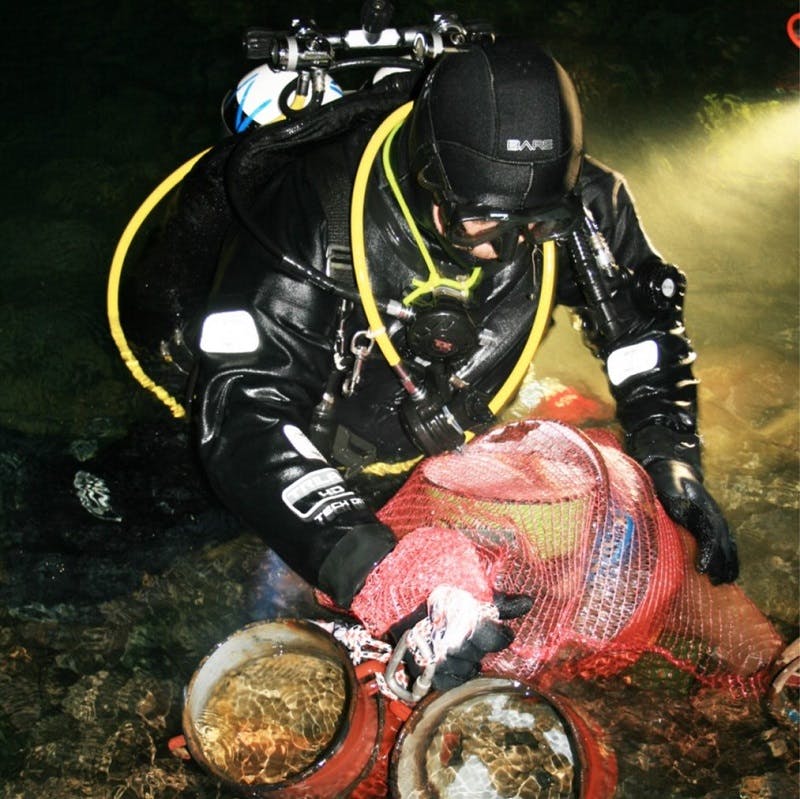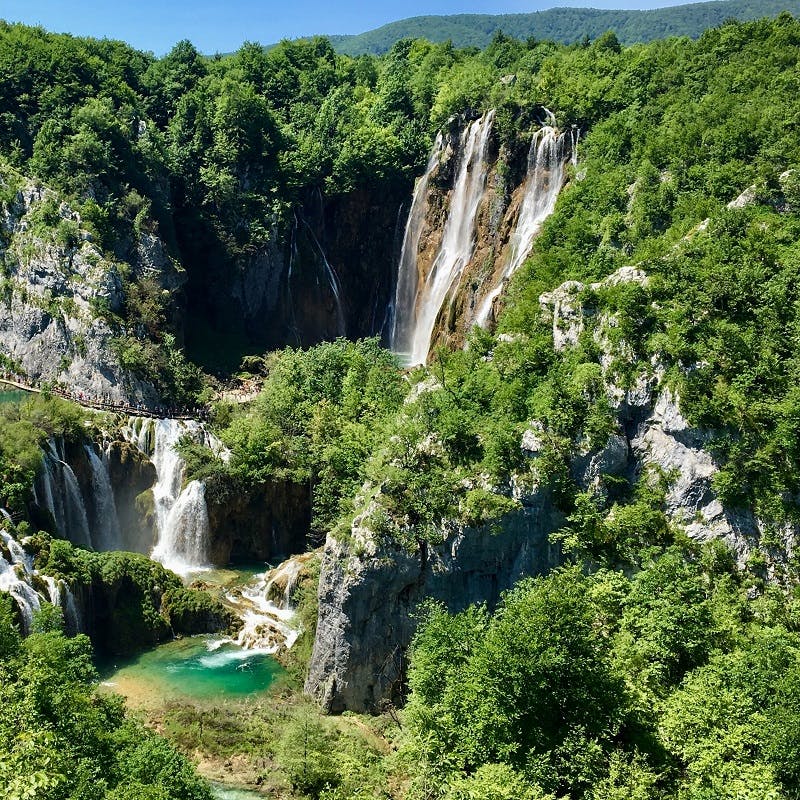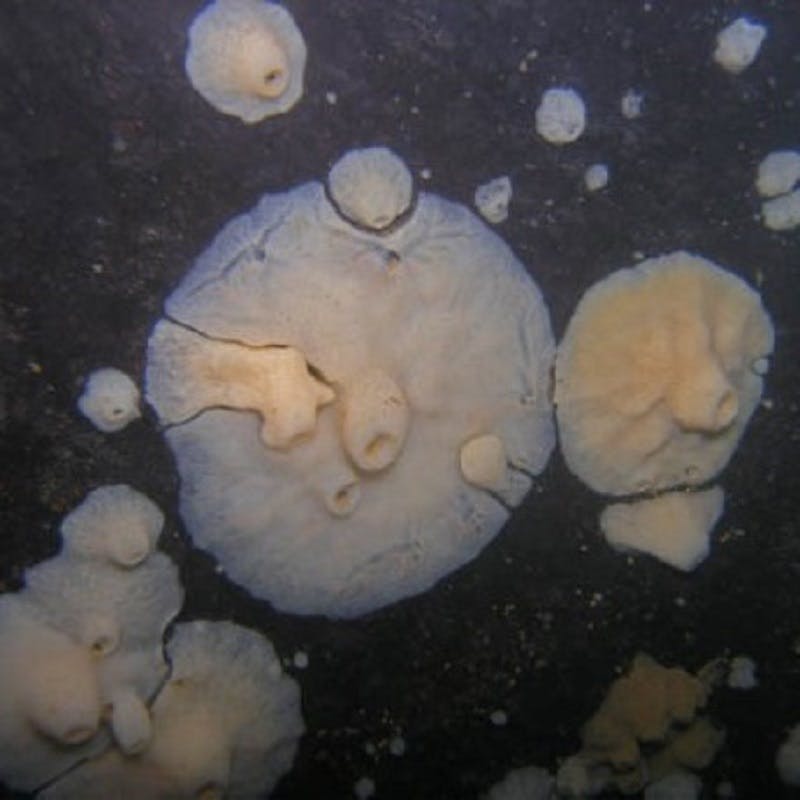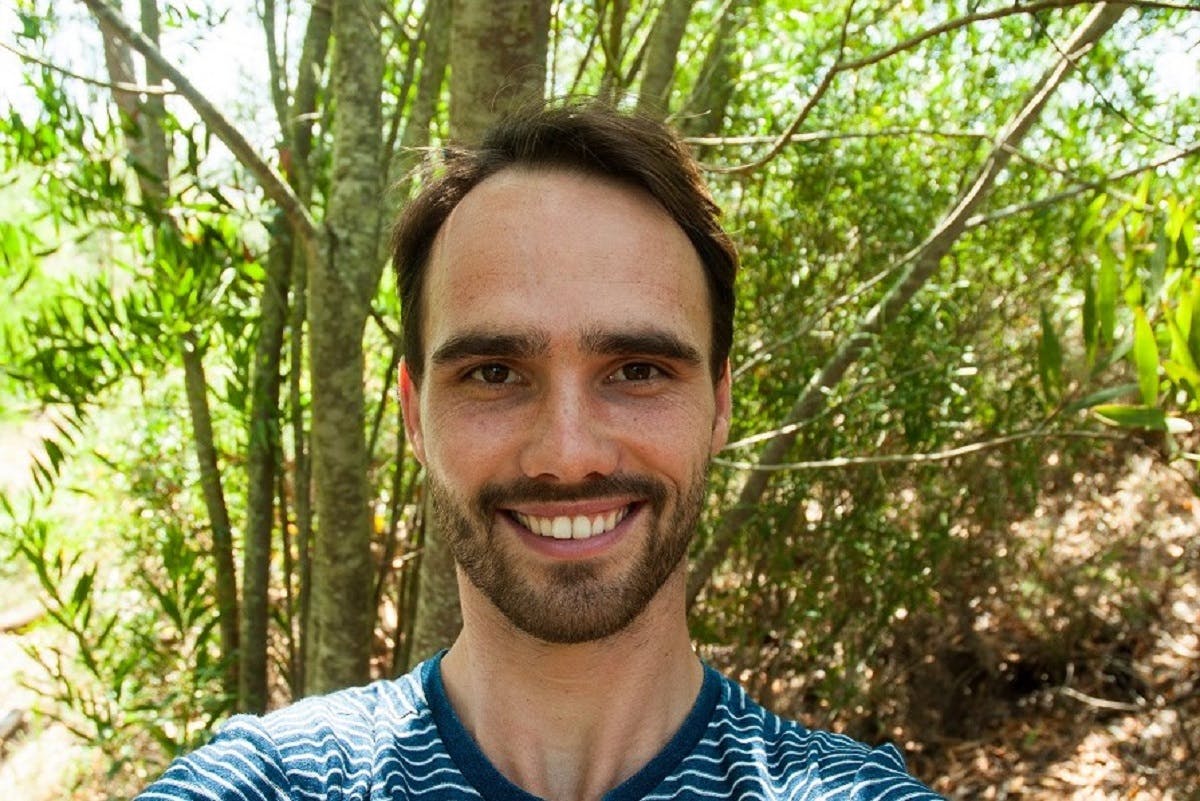In Croatia, there is a huge network of submerged caves that is recognized as a global hotspot for subterranean biodiversity. The animals that have adapted to live here are unlike anything you may find above the surface. The olm, for example, is a blind cave salamander that can live up to a century and survive for a decade without feeding. The specific cave we are focusing on is also home to the world’s only species of cave freshwater sponge and it provides habitat for the last remaining population of Croatian Dace, a species of small fish that is thought to be on the verge of extinction. The cave’s entrance has been used as a waste disposal site for centuries and the accumulated pollution is threatening the cave animals that live there. For this project, we are partnering with expert cave biologists and cave divers from the Croatian Institute for Biodiversity to plan an operation to remove the most dangerous materials from the cave. The goal is to safeguard the future of these unique species and prevent further contamination of an important source of drinking water.
Project Timeline
April - May 2021
Cave clean up operation takes place
The Intervention
This project will fund an operation to remove waste from a cave that provides habitat for threatened cave animals. About 16 cubic m3 of solid waste have accumulated inside the cave. This includes plastic, metal, rubber, wood and domestic appliances. The waste that is currently above the water level will be removed by a team of local cavers with the aid of ropes and winches if necessary. For submerged waste, a more complex operation involving cave divers will be required to bring these large objects to the surface.
Funding will be used to pay for the food and transport of volunteer cavers and cave divers during the operation and to purchase the equipment needed to carry it out. Given the amount of waste, the intervention is likely to take several days. Even so, it is unlikely that we will be able to remove all the waste in which case the objects deemed more likely to be contaminating the water will be removed first. Once removed, the waste will be transported to an appropriate recycling plant by truck.

The olm is reliant on clean pure water and water pollution is one of its main threats
Sir David Attenborough in Attenborough's Story of Life, BBC Earth
Learn More About the Context Behind this Project
The Dinaric arc is a cave biodiversity hotspot
The Dinaric arc in South-Eastern Europe is a region characterised by stunning landscapes, from impressive mountain peaks to cascading turquoise waterfalls and a wild Mediterranean coast. Easier to miss however is the fact that this region hosts the largest network of subterranean rivers in Europe and that it is a global hotspot for cave biodiversity. Because it is difficult for cave-adapted animals to move between caves many species have a very narrow distribution and some exist only in a single cave.

Unique but forgotten about species
The Rupečica-Šmitovo cave system, which is the one we are focusing on, provides habitat for some very interesting species. The olm is probably the most famous among them. It’s a blind cave salamander that can live up to a century and survive for a decade without feeding. It is among the most evolutionarily distinct amphibians known to science meaning that there is nothing else like it on earth. It is also one of the 10 species that David Attenborough would select to be saved from extinction if he had to choose. Another interesting species found here is the Croatian dace a small freshwater fish species that rely on this habitat to sustain its last remaining population. And a final species that needs mentioning is the Ogulin cave sponge. This is the world’s only known species of cave-dwelling freshwater sponge and it is known only from a few caves around this area.

Risk of extinction
Sadly the entire community of organisms in this cave is under threat. This is especially concerning if we consider that many of them are at considerable risk of global extinction.
- The olm, Proteus anguinus, is classified as vulnerable to extinction, mainly due to the threat posed by water pollution and cave habitat degradation throughout its range
- The Croatian dace, Telestes polylepis, is classified as critically endangered and appears to be on the verge of extinction with the last small population found inside this cave.
- The cave sponge, Eunapius subterraneus, was previously classified as endangered and exists only in this part of Croatia but more data is needed about its conservation status.

Water pollution
Like so many others, the entrance of the cave has been used as a waste disposal site for centuries and this has resulted in the accumulation of large amounts of waste. Unless we remove it, toxic chemicals will continue to degrade water quality and once these chemicals enter the cave system through the water they can no longer be physically removed and may continue affecting the ecosystem for a long time. On top of this, the submerged caves in this region provide drinking water for the surrounding area and if they continue being contaminated this could end up having negative health consequences.

Curious to learn more?
If the world of cave biology intrigues you and you haven’t yet read our article about cave dwelling animals you should check it out!
If you want to learn more about the backstory of why we think it is important to protect bizarre creatures like the olm you can listen to our podcast episode about Mossy Earth’s “Ugly ones” programme.
Sources & further reading

- “Subterranean Biodiversity Patterns from Global to Regional Scales” - Zagmajster, M., Malard, F., Eme, D., & Culver, D. C. (2018)
- “The morphological variability, distribution patterns and endangerment in the Ogulin cave sponge Eunapius subterraneus Sket & Velikonja, 1984 (Demospongiae, Spongillidae)” - Bilandžija, H., Bedek, J., Jalžić, B., & Gottstein, S. (2007)
the team behind the project

Tiago de Zoeten, conservation biologist at Mossy Earth

Dušan Jelić, researcher at the Croatian Institute for Biodiversity